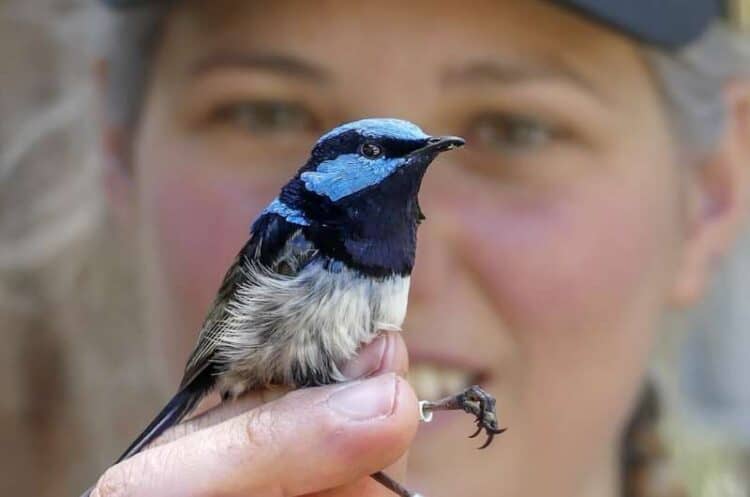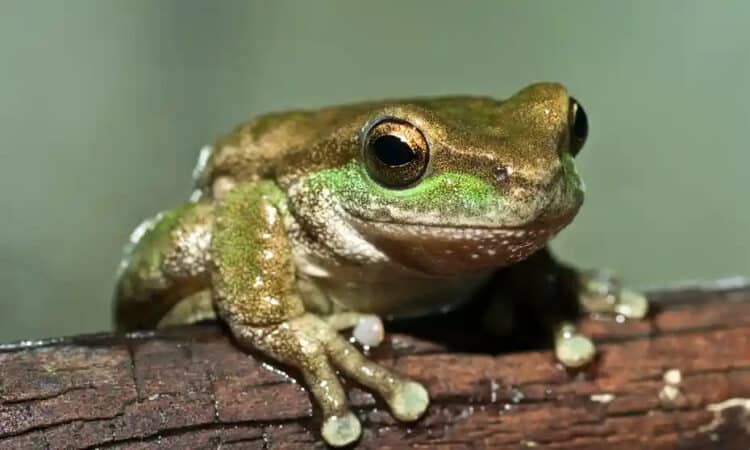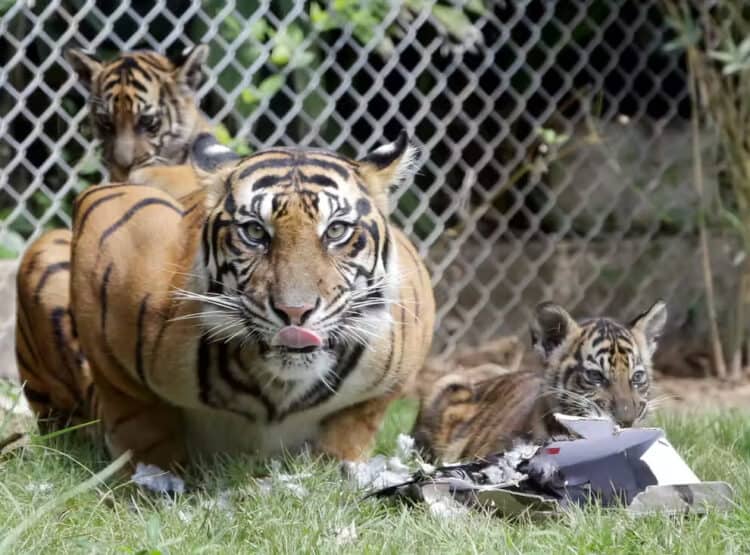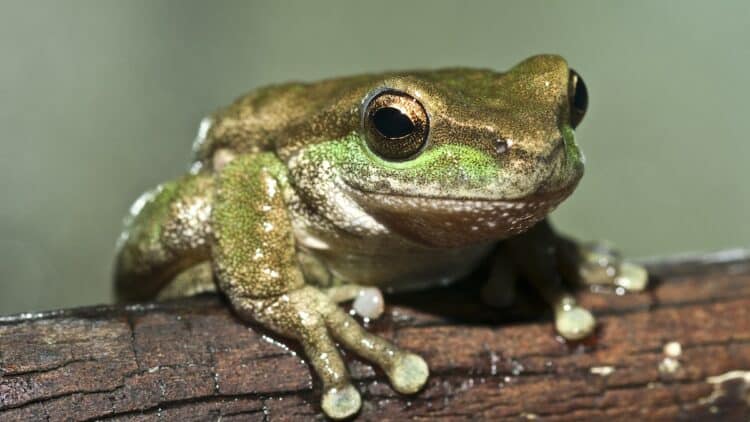Six tiny nestlings at San Diego Zoo Global’s facilities in Hawai’i are being closely watched by conservation biologists.
These six chicks represent hope for a small Hawaiian bird species known as the ‘Akikiki.
The species is being brought into captivity to start a breeding population through a collaborative effort by the Kaua’i Forest Bird Recovery Project (KFBRP), State of Hawai’i Department of Land and Natural Resources’ (DLNR) Division of Forestry and Wildlife, U.S. Fish and Wildlife Service-Pacific Islands Fish and Wildlife Office (USFWS-PIFWO) and San Diego Zoo Global.
Eggs from ‘Akikiki and ‘Akeke’e nests were collected from the wild recently as part of an effort to preserve these two bird species from extinction.
“Both the ‘Akikiki and ‘Akeke’e have shown steep declines over the past 10 to 15 years, and now number fewer than 1,000 birds each,” said John Vetter, forest bird recovery cordinator of the DLNR’s Division of Forestry and Wildlife. “A panel of experts in Hawaiian forest bird conservation convened to identify steps needed to preserve these species and ranked the initiation of captive breeding populations as one of the highest priorities for both species.”
The ‘Akikiki and ‘Akeke’e are two species of Hawaiian honeycreeper found only on the island of Kaua’i. These two small bird species have been severely affected by introduced diseases such as avian malaria, loss of native forest habitat, hurricanes, and the introduction of non-native predator species in the wild. Very little is known about them and they have not been raised in a zoological setting before. Conservationists with the HEBCP have worked successfully with a number of other similar native Hawaiian birds and are using these techniques to ensure both species will thrive.
“By bringing ‘Akikiki and ‘Akeke’e into captivity for breeding purposes, we will prevent their extinction and support their future recovery by releasing captive-reared offspring into the wild in the future,” said Bryce Masuda, conservation program manager, San Diego Zoo Global.
Since early March, KFBRP team members have spent hundreds of hours searching the dense rain forests of Kauai’s ‘Alaka’i Wilderness Preserve for the cryptic nests of these two rare species, said Dr. Lisa “Cali” Crampton, KFBRP project leader. “Both nest on tiny branches at the top of the canopy, about 30 to 40 feet high, and camouflage their nests as clumps of moss. To reach the nests, KFBRP devised a suspension system for a 40-foot extension ladder.”
Eggs from the two species were removed from the nests and a team of bird experts hiked and helicoptered them to a facility for artificial incubation. Six ‘Akikiki chicks have hatched so far and appear to be doing well under the care of San Diego Zoo Global staff. Conservationists will continue their efforts for the remainder of the breeding season. The USFWS-PIFWO provided the majority of the funding for the project and a grant from the Mohamed Bin Zayed Species Conservation Fund has also been instrumental in this effort.
Bringing species back from the brink of extinction is the goal of San Diego Zoo Global. As a leader in conservation, the work of San Diego Zoo Global includes onsite wildlife conservation efforts (representing both plants and animals) at the San Diego Zoo, the San Diego Zoo Safari Park, and San Diego Zoo Institute for Conservation Research, as well as international field programs on six continents. The work of these entities is inspiring children through the San Diego Zoo Kids network, reaching out through the Internet and in children’s hospitals nationwide. The work of San Diego Zoo Global is made possible by the San Diego Zoo Global Wildlife Conservancy and is supported in part by the Foundation of San Diego Zoo Global.
KFBRP is a collaboration between the Pacific Studies Cooperative Unit of the University of Hawai’i and the DLNR Division of Forestry and Wildlife. KFBRP’s mission is to promote knowledge, conservation of Kauai’s native forest birds, with a particular focus on the three endangered species: Puaiohi, ‘Akikiki and ‘Akeke’e. For more information, please see www.kauaiforestbirds.org. The mission of the Department of Land and Natural Resources’ Division of Forestry and Wildlife is to responsibly manage and protect watersheds, native ecosystems, and cultural resources and provide outdoor recreation and sustainable forest products opportunities, while facilitating partnerships, community involvement and education.
The mission of the U.S. Fish and Wildlife Service is working with others to conserve, protect, and enhance fish, wildlife, plants, and their habitats for the continuing benefit of the American people. The mission of the Pacific Islands Fish and Wildlife Office is to conserve and restore native biodiversity and ecological integrity of Pacific Island ecosystems for the benefit of present and future generations through leadership, science-based management, and collaborative partnerships.
This article was first published by Phys.org on 15 Apr 2015.







Leave a Reply